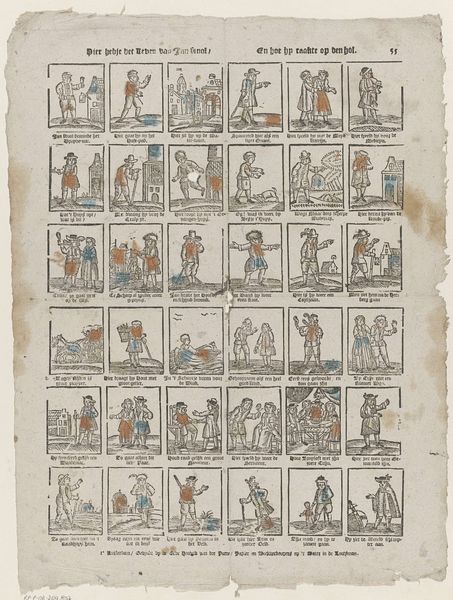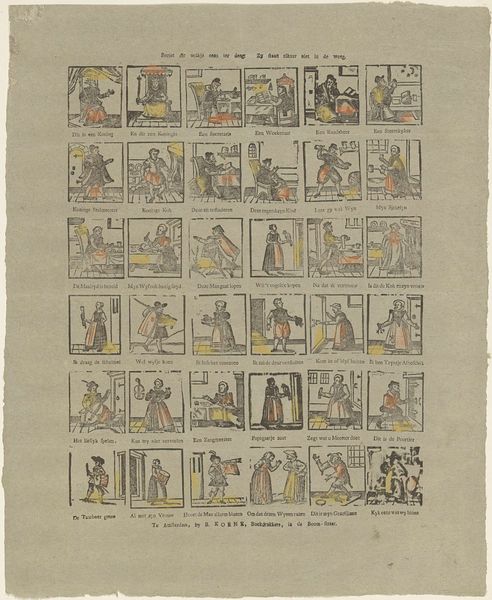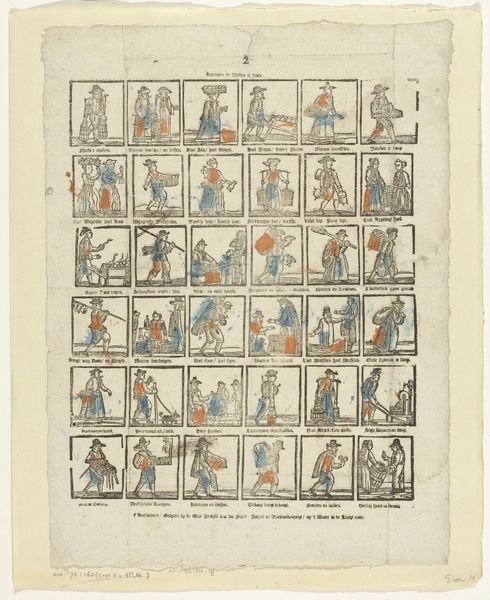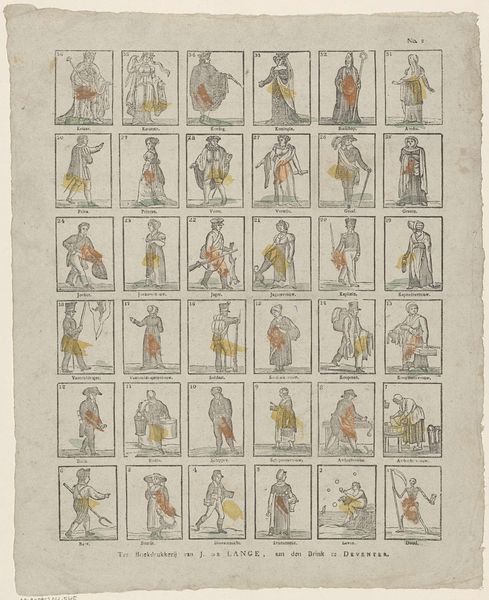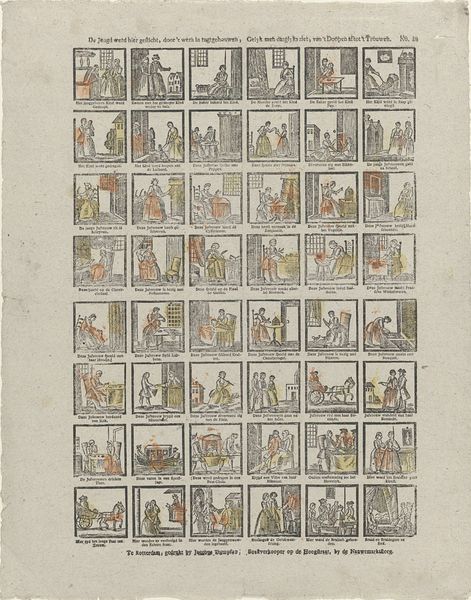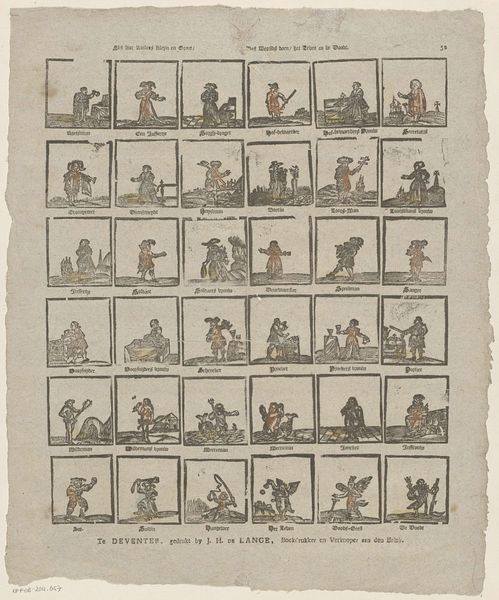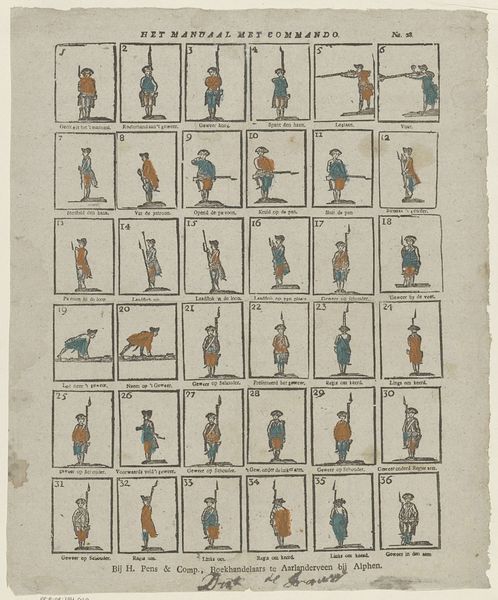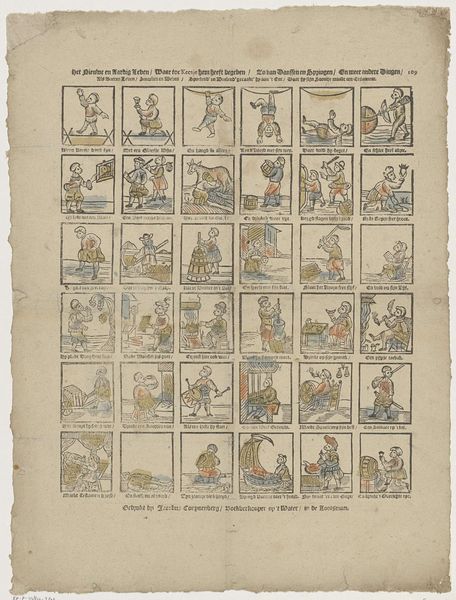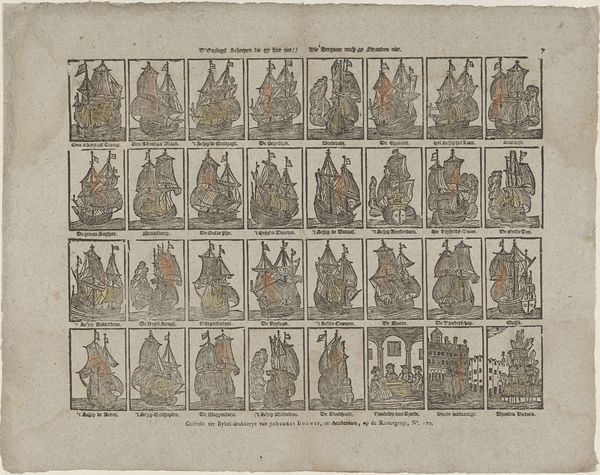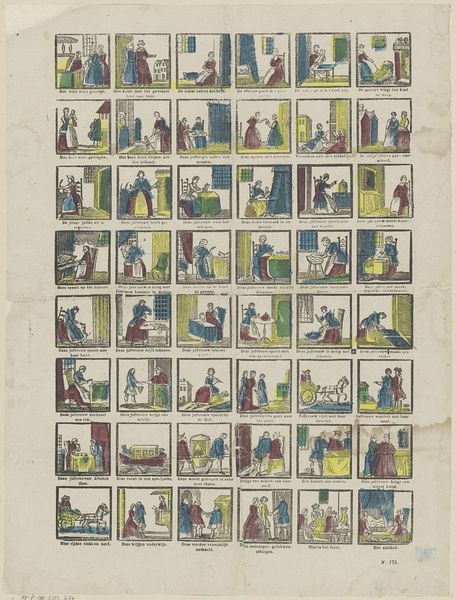
Men vint geen raarder volk / Als te water en te land. / Zo als dit zes-en-dertigtal vertoond in haare stand 1805 - 1808
0:00
0:00
johannesbouwer
Rijksmuseum
print, engraving
#
dutch-golden-age
# print
#
figuration
#
genre-painting
#
engraving
Dimensions: height 404 mm, width 340 mm
Copyright: Rijks Museum: Open Domain
Curator: Looking at this fascinating engraving from between 1805 and 1808 by Johannes Bouwer, titled "Men vint geen raarder volk / Als te water en te land. / Zo als dit zes-en-dertigtal vertoond in haare stand," what jumps out at you? Editor: It reminds me of a quirky family album—but with jobs. Like each little character is someone's slightly eccentric ancestor with a very specific trade. The muted colors give it a quaint, old-world charm. What does all that text mean up top? Curator: The inscription is a poetic observation essentially stating "You won't find stranger folk by water or by land / As these thirty-six figures show you in their place.” It introduces us to the tableau of diverse occupations portrayed. Each figure represents a different profession or social role in Dutch society at the time. It really serves as a cultural snapshot. Editor: Thirty-six different lives all squeezed onto one page. It’s like a social microcosm in miniature! Is it supposed to be humorous? Curator: I believe so. There is indeed a satirical element, a commentary on the perceived oddities and peculiarities of various professions. But at the core is observation. We see reflections of social hierarchies and prevailing stereotypes. It preserves memory too. Consider how we project our biases on these images as modern observers. Editor: Ah, the universality of human judgment, wrapped up in these little boxes. Each individual stands on their square of land. What is remarkable is how each person is captured in motion, in action. Curator: And notice that limited color palette: just a touch of red or ochre brings a spark to the detailed lines. Editor: Yes! I can feel the craftsman’s careful hand. I feel invited to contemplate each occupation—that one hauling an axe, or someone carrying a strange tool... This reminds me of the play between work and performance, where labor itself becomes a staged act. Curator: A poignant reminder of how deeply ingrained labor is within identity. It becomes the most public performance of self, a presentation for the community, but perhaps a symbol of continuity. Editor: True. Viewing this print today allows me to think through how our self-perception changes depending on which roles are available. It’s funny how a historical snapshot can still hold up a mirror.
Comments
No comments
Be the first to comment and join the conversation on the ultimate creative platform.
